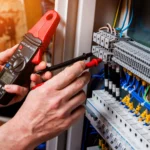Starting a roadside assistance business without towing might seem like a niche venture, but it’s a lucrative opportunity that serves a growing demand in the market. With more vehicles on the road than ever before, the need for roadside assistance services continues to rise.
Whether it’s a flat tire, dead battery, or locked-out vehicle, motorists often find themselves in distress and in need of immediate assistance. This presents an excellent opportunity for entrepreneurs to capitalize on this demand and provide essential services without the need for towing capabilities.
Understanding the Market Demand
Before delving into the intricacies of starting a roadside assistance business without towing, it’s crucial to understand the market demand. Research indicates a significant need for on-demand roadside assistance services that cater to minor vehicle issues.
Many drivers require assistance with jump-starts, tire changes, fuel delivery, and lockout services, which do not necessarily require towing. By focusing on these specific services, entrepreneurs can tap into a niche market segment with high demand and less competition.
Identifying Target Customers
Identifying target customers is essential for any business venture. In the case of a roadside assistance business without towing, the target audience primarily consists of motorists who encounter minor vehicle problems while on the road.
This includes individual drivers, commuters, rideshare drivers, delivery drivers, and fleet operators. By understanding the needs and preferences of these target customers, entrepreneurs can tailor their services to meet specific requirements and deliver exceptional customer experiences.
Establishing Service Offerings

Once the target market is identified, it’s time to establish the service offerings. For a roadside assistance business without towing, the focus should be on providing efficient solutions for common vehicle issues. Key services may include:
1. Jump-Start Assistance
- Providing battery jump-starts for vehicles with dead batteries.
2. Tire Change Services
- Assisting drivers with flat tire changes or repairs.
3. Fuel Delivery
- Delivering fuel to stranded motorists who have run out of gas.
4. Lockout Services
- Helping drivers regain access to their locked vehicles.
By specializing in these non-towing services, businesses can streamline operations and optimize resources for maximum efficiency.
Building a Reliable Network
To ensure prompt and reliable service delivery, it’s essential to build a network of skilled professionals and service providers. This network may include mechanics, locksmiths, roadside technicians, and fuel suppliers.
Who can be dispatched quickly to assist customers in need? Establishing partnerships with trusted vendors and service providers enhances the credibility and reliability of the roadside assistance business.
Implementing Technology Solutions
In today’s digital age, technology plays a crucial role in optimizing business operations and enhancing customer experiences. Implementing a robust technology solution, such as a mobile app or online platform, can streamline service requests, dispatching, and payment processing.
Customers can easily request assistance, track the arrival of service providers, and make secure payments through the app, thereby improving overall convenience and satisfaction.
Providing Exceptional Customer Service
Customer service is paramount in the roadside assistance industry. Ensuring timely, courteous, and professional service can significantly impact customer satisfaction and loyalty. Empathizing with customers in distress.
Communicating effectively and resolving issues promptly are key elements of delivering exceptional customer experiences. By prioritizing customer satisfaction, businesses can build a positive reputation and attract repeat business and referrals.
Benefits of Starting a Roadside Assistance Business without Towing

1. Low Startup Costs
Compared to traditional towing businesses that require expensive towing equipment and vehicles, starting a roadside assistance business without towing involves lower initial investment costs. This makes it more accessible for aspiring entrepreneurs with limited capital.
2. Targeted Market Segment
By focusing on non-towing services such as jump-start assistance, tire changes, fuel delivery, and lockout services, businesses can target a specific market segment with high demand and less competition. This niche approach allows for more focused marketing efforts and greater potential for success.
3. Flexible Business Model
Roadside assistance businesses without towing have the flexibility to adapt their services based on market demand and customer needs. They can easily scale their operations and expand their service offerings as their business grows, without the constraints associated with towing capabilities.
4. Reduced Operational Complexity
Without the need for towing equipment and vehicles, businesses can streamline their operations and reduce operational complexity. This allows for more efficient resource allocation, quicker response times, and improved customer satisfaction.
5. Enhanced Customer Experience
By specializing in non-towing services, businesses can provide quicker and more targeted assistance to motorists in distress. This results in enhanced customer experiences, as drivers receive prompt solutions to their vehicle problems without unnecessary delays or complications.
6. Lower Insurance Costs
Since roadside assistance businesses without towing typically do not involve the transportation of vehicles, they may benefit from lower insurance costs compared to towing companies. This can contribute to overall cost savings and improved profitability.
7. Scalable Growth Opportunities
As the demand for roadside assistance services continues to rise, businesses without towing capabilities have ample opportunities for growth and expansion. By building a strong reputation for reliability and quality service, businesses can attract more customers and increase their market share over time.
8. Community Impact
Roadside assistance businesses play a vital role in supporting their local communities by providing essential services to motorists in need. By operating a business that helps people during stressful situations, entrepreneurs can make a positive impact and build strong relationships within their community.
Frequently Asked Questions (FAQs)

Q: Do I need towing capabilities to start a roadside assistance business?
No, towing capabilities are not necessary for starting a roadside assistance business. By focusing on non-towing services such as jump-start assistance, tire changes, fuel delivery, and lockout services, entrepreneurs can cater to a specific market segment without the need for towing equipment.
Q: How can I attract customers to my roadside assistance business?
To attract customers, it’s essential to market your services effectively through various channels such as online advertising, social media, and partnerships with local businesses. Offering competitive pricing, reliable service, and exceptional customer experiences can also help attract and retain customers.
Q: What are the startup costs associated with starting a roadside assistance business?
A: The startup costs for a roadside assistance business can vary depending on factors such as equipment purchases, vehicle maintenance, insurance, licensing, and marketing expenses. However, by focusing on non-towing services, entrepreneurs can minimize initial investment costs compared to traditional towing businesses.
Q: Is there a demand for roadside assistance services without towing?
Yes, there is a significant demand for roadside assistance services that do not require towing. Many motorists encounter minor vehicle issues such as dead batteries, flat tires, and lockouts, for which they require immediate assistance. By providing specialized non-towing services, businesses can meet this demand effectively.
Q: How can I differentiate my roadside assistance business from competitors?
To differentiate your business, focus on providing exceptional customer service, quick response times, and transparent pricing. Building a reliable network of service providers and leveraging technology solutions can also set your business apart from competitors.
Conclusion
Starting a roadside assistance business without towing presents a unique opportunity to enter a niche market segment with high demand and less competition. Understanding the market demand, identifying target customers, and offering specialized non-towing services.
Entrepreneurs can establish a successful business that caters to the needs of motorists in distress. Businesses can differentiate themselves and thrive in the competitive roadside assistance industry by prioritizing customer satisfaction, building a reliable network, and leveraging technology solutions.






